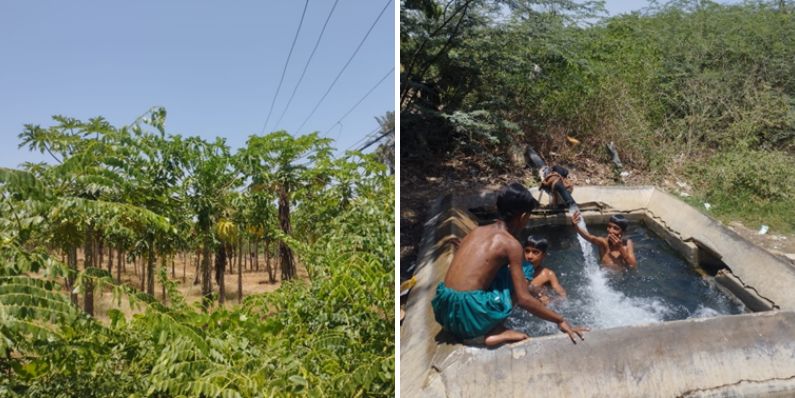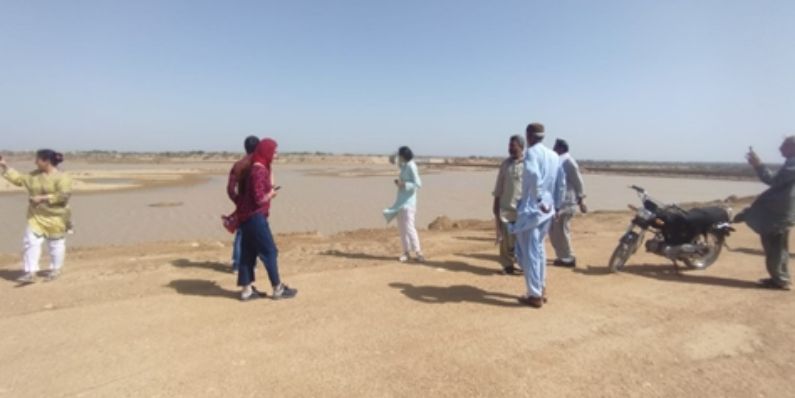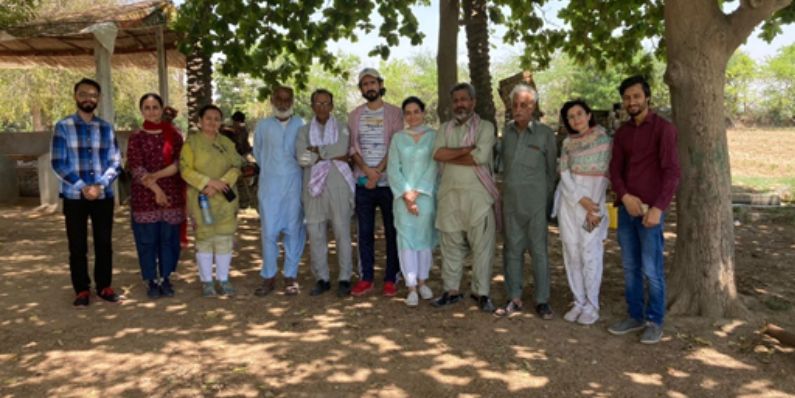Unveiling the story: Delving into the ecological and social consequences of Malir Expressway
A reflection by Noman Nadir Ali Budhani
As a part of the “Environmental Education" course, we visited different sites of the Malir Expressway project. The 39-km-long project was initiated in Dec 2020 with an estimated cost of Rs. 28 billion. The expressway will start from KPT Interchange, Qayyumabad and terminate at Karachi-Hyderabad Motorway near Kathore. The project claims to divert the traffic from the port and industrial areas as a new southern alternate path to major routes. By speeding up access to prime real estate projects along the course, the Malir Expressway will cut travel time from KPT Flyover to the Super Highway (M-9) to just 25 minutes.
However, since the announcement of this project, several local activists and environmental champions raised their concerns towards this project. So, we wanted to understand the project through the lens of local people of Malir. Before the visit, we researched with the help of relevant newspaper articles and the environmental impact assessment (EIA) report.
 Figure 1: A farm and tubewell of the farm in Malir (The locals claimed that Malir has the sweetest of all water in Karachi)
Figure 1: A farm and tubewell of the farm in Malir (The locals claimed that Malir has the sweetest of all water in Karachi)
Our visit was facilitated by local activists, including Abdul Hafeez Baloch, Salman Baloch, Azeem Daikand, Anwar Baloch and Siddique Baloch, who helped us understand the ground realities of the land. They alleged that the construction of this expressway began even before the proponents received the EIA report. Additionally, the meeting was scheduled ten days after issuing the EIA report, which consists of 800 pages in English. It raises questions about why local people were not given enough time to read and prepare for the public hearing.
During our visit, we went to the Sayed Hashmi Reference Library, which is supposedly the location of one of the interchanges. The EIA does not give a plan to relocate the library, which preserves over 60 thousand periodicals and 15 thousand books in the Balochi language. Further, according to social activist and wildlife photographer Salman Baloch, EIA gives incorrect information on species that concern the ecology because several species are affected by this grand project.
 Figure 2: Standing on the Malir expressway site (where work is in process)
Figure 2: Standing on the Malir expressway site (where work is in process)
Most importantly, the Malir River is being destroyed, which according to the local activists, is the source of irrigation for crops in the area and a source of sweet water for the residents of Karachi. The sewage water is already dumped into this river, which makes it difficult to use its water for agriculture. They say when a giant structure is built along the Malir River, it could be disastrous and could lead to urban flooding. Another important aspect we got to know is the presence of indigenous people in the area. While the world is looking out for their indigenous people, we are ensuring that we destroy their land and take their bread and butter away from them.
When Sindh Environment Protection Agency (SEPA) did not address their concerns, they contacted the Asian Development Bank (ADB), which initially agreed to be one of the project's financers. After listening to their concerns, their team visited the site and met locals. Finally, they backed out and decided against financing the project on environmental grounds. This, in fact, is a significant victory for those who are fighting for the cause of saving indigenous people, their culture, biodiversity, and the Malir River, which has benefitted millions of people over the last few centuries.
Now the question is, what can we do? As educators, we have a unique opportunity to instill environmental consciousness, promote sustainable development, and empower students to become responsible custodians of the planet. By fostering critical thinking, community engagement, and environmental literacy, they can inspire a generation of students to actively participate in shaping a future that harmonizes development aspirations with the preservation of nature's invaluable heritage. Together, we can create a society that values both progress and environmental stewardship.
 Figure 3: A group photo of the environmental stewards of IED with the environmental stewards of Malir
Figure 3: A group photo of the environmental stewards of IED with the environmental stewards of Malir


